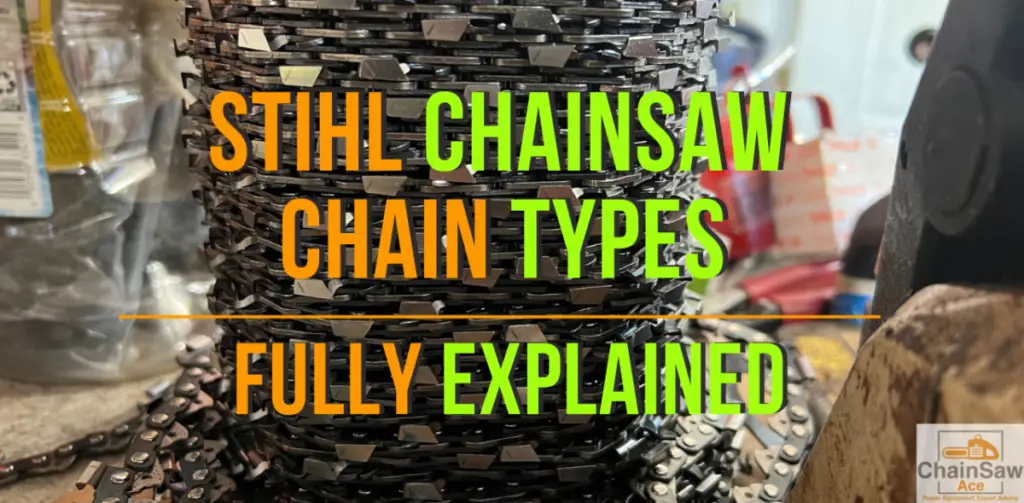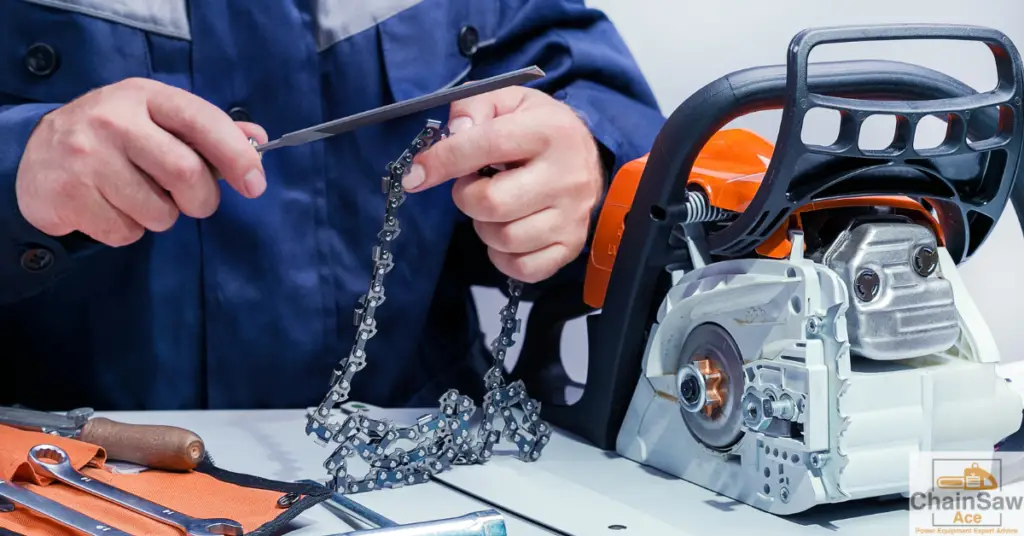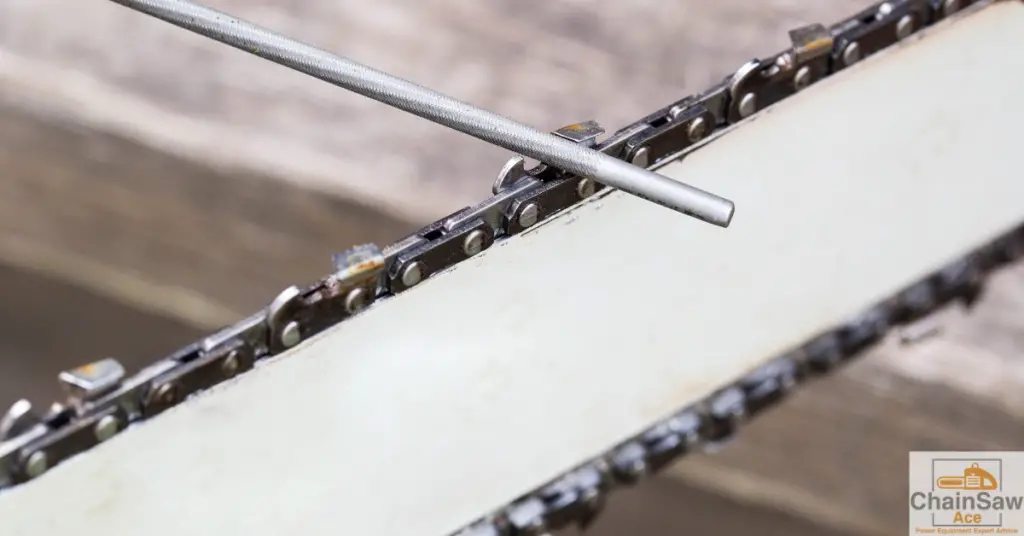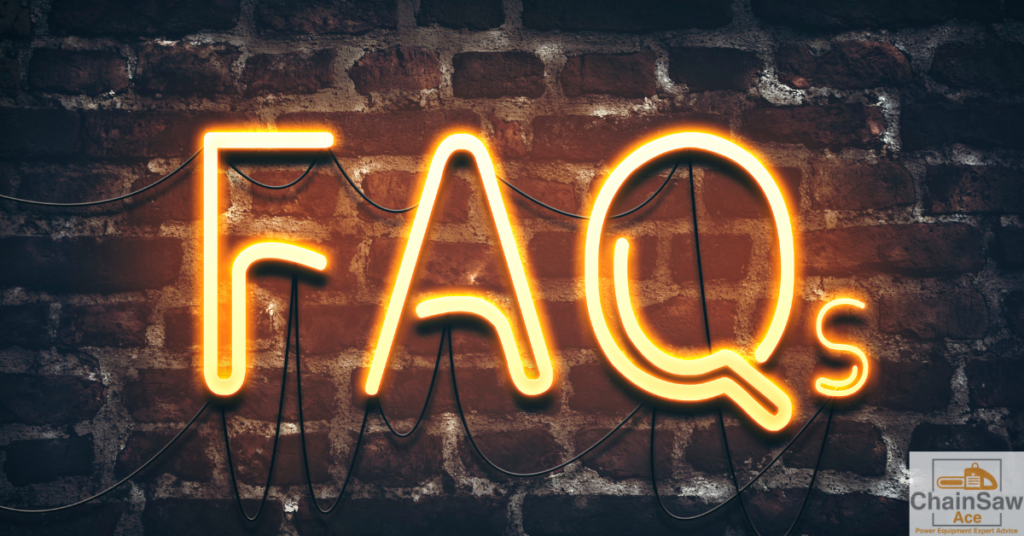
Choosing the right chain for your Stihl chainsaw is crucial for optimal performance and safety. Stihl offers a variety of chainsaw chains to cater to different applications and user requirements.
In this article, we will detail the different types of Stihl chainsaw chains and their applications, helping you make an informed decision.
Stihl chainsaw chain includes the following types of chains: Picco Micro Mini, Rapid Micro, Rapid Super, and Rapid Duro (Carbide Chain).
Stihl Chainsaw Chains are AVAILABLE HERE ON AMAZON.
Picco Micro Mini

Features
Picco Micro Mini is a narrow, low-profile chain designed for use on lightweight chainsaws. It has a small pitch and gauge, which helps reduce kickback and improve cutting efficiency.
Applications
This chain is ideal for pruning, trimming, and other light-duty tasks. It is suitable for users who prioritize easy handling and low vibration.
Rapid Micro
Features
Rapid Micro chains are designed for use on mid-range chainsaws. They offer a good balance between performance and ease of use, with a slightly larger pitch and gauge compared to the Picco Micro Mini.
Applications
These versatile chains can handle a range of tasks, from cutting firewood to felling small trees. They are suitable for users who need a reliable and efficient chain for various applications.

Rapid Super
Features
Rapid Super chains are designed for use on high-performance chainsaws. They have a larger pitch and gauge, which provide greater cutting efficiency and reduced vibration.
Applications
These chains are ideal for heavy-duty tasks such as felling large trees, bucking logs, and cutting through thick branches. They are suitable for professional users who need a durable and powerful chain.
Rapid Duro
Features
Rapid Duro chains are designed for use on chainsaws with longer bars. They have a larger pitch and gauge, as well as carbide-tipped cutting teeth for increased durability.
Applications
These chains are ideal for cutting through tough, abrasive materials like hardwoods, frozen wood, and dirty wood. They are suitable for users who require a robust chain for demanding cutting tasks.
Carbide-tipped Chains

Features
Carbide-tipped chains have carbide inserts embedded in the cutting teeth for increased durability and longevity. They provide excellent resistance to wear and tear, even when cutting through abrasive materials.
Applications
These chains are ideal for cutting through hard materials like concrete, brick, and stone. They are suitable for users who need a durable chain for specialized applications.
Understanding Saw Chain Terminology
Pitch
The pitch is the distance between three consecutive rivets divided by two. It indicates the size of the chain and helps determine the chain’s compatibility with your chainsaw.
Gauge
The gauge is the thickness of the drive links that fit into the guide bar groove. It is essential to match the gauge of the chain with the gauge of the guide bar to ensure proper fit and optimal performance.
Kickback
Kickback refers to the sudden upward and backward movement of the chainsaw, which can occur when the chain’s nose contacts a solid object. Chains with low kickback are safer and recommended for novice users.
Lubrication
Proper lubrication is essential for the smooth functioning and longevity of your chainsaw chain. It helps reduce friction, heat, and wear, allowing the chain to operate efficiently.
How to Choose the Right Chain for Your Chainsaw

To choose the right chain for your Stihl chainsaw, consider the following factors:
- The type of tasks you will be performing (pruning, cutting firewood, felling trees, etc.)
- The power and size of your chainsaw
- Your level of experience and skill with chainsaws
- The chain’s compatibility with your chainsaw’s guide bar (pitch and gauge)
By considering these factors, you can select a chain that meets your specific needs and ensures optimal performance and safety.
How to Replace a Stihl Chainsaw Chain
- Turn off the chainsaw and remove the spark plug cap for safety.
- Loosen the nuts securing the side cover, and remove the cover.
- Release the chain tension by turning the tensioning screw counterclockwise.
- Remove the old chain from the guide bar.
- Install the new chain, making sure it is properly seated in the guide bar groove.
- Adjust the chain tension by turning the tensioning screw clockwise until the chain is snug but can still be moved easily by hand.
- Reattach the side cover and tighten the nuts securely.
- Replace the spark plug cap and start the chainsaw to ensure proper chain operation.
Maintaining Your Stihl Chainsaw Chain
Regular maintenance is crucial for the performance and longevity of your Stihl chainsaw chain. Follow these steps to keep your chain in optimal condition:
- Keep the chain sharp by regularly filing the cutting teeth and depth gauges.
- Ensure proper chain tension to avoid excessive wear and improve cutting efficiency.
- Clean the chain and guide bar regularly to remove debris and prevent buildup.
- Lubricate the chain with high-quality chain oil to reduce friction and wear.
Safety Tips for Using Stihl Chainsaws
- Wear appropriate protective gear, including gloves, safety glasses, hearing protection, and sturdy boots.
- Inspect the chainsaw for damage or loose parts before each use.
- Maintain a firm grip and proper stance while operating the chainsaw.
- Avoid using the chainsaw’s nose to make cuts, as this increases the risk of kickback.
- Keep bystanders and pets at a safe distance while operating the chainsaw.
Conclusion
Choosing the right Stihl chainsaw chain is essential for optimal performance, safety, and efficiency. By understanding the different types of chains and their applications, you can select the perfect chain for your specific needs.
Regular maintenance and adherence to safety guidelines will ensure a smooth and productive chainsaw experience. I hope this article helps to answer your question about Stihl chainsaw chains.
Have a great day out there, and happy sawing!
Steven R.
Frequently Asked Questions

How do I know what chain to buy for my STIHL chainsaw?
To determine the appropriate chain for your Stihl chainsaw, consider the type of tasks you’ll be performing, the power and size of your chainsaw, your experience level, and the chain’s compatibility with your guide bar (pitch and gauge).
What’s the difference between micro and super on a STIHL chainsaw chain?
Micro chains, such as the Picco Micro Mini and Rapid Micro, are designed for use on lightweight and mid-range chainsaws, respectively. They are suitable for light to medium-duty tasks. Super chains, such as the Rapid Super, are designed for use on high-performance chainsaws and are ideal for heavy-duty tasks like felling large trees and bucking logs. Super chains typically have a larger pitch and gauge, offering greater cutting efficiency and reduced vibration.
What’s the difference between RS and RM STIHL chains?
RS (Rapid Super) chains are designed for high-performance chainsaws and heavy-duty tasks, while RM (Rapid Micro) chains are designed for mid-range chainsaws and a variety of cutting tasks. RS chains have a larger pitch and gauge, providing increased cutting efficiency and reduced vibration compared to RM chains.
What are the three types of chainsaw chains?
There are three basic types of chainsaw chains: full chisel, semi-chisel, and low-profile. Full chisel chains have square-cornered teeth for fast and aggressive cutting, but they dull quickly and are more prone to kickback. Semi-chisel chains have rounded-corner teeth, providing slower cutting but better durability and resistance to dulling. Low-profile chains have smaller teeth, resulting in reduced kickback and easier handling, but they may not be suitable for heavy-duty tasks.
How often should I sharpen my STIHL chainsaw chain?
The frequency of chain sharpening depends on the type of tasks you perform and the hardness of the material being cut. As a general guideline, you should sharpen your chainsaw chain when you notice a decrease in cutting efficiency, when the chain requires excessive force to cut, or when the sawdust produced is fine and powdery instead of coarse and chunky. Regularly inspecting and sharpening your chain will ensure optimal performance and prolong its life.
